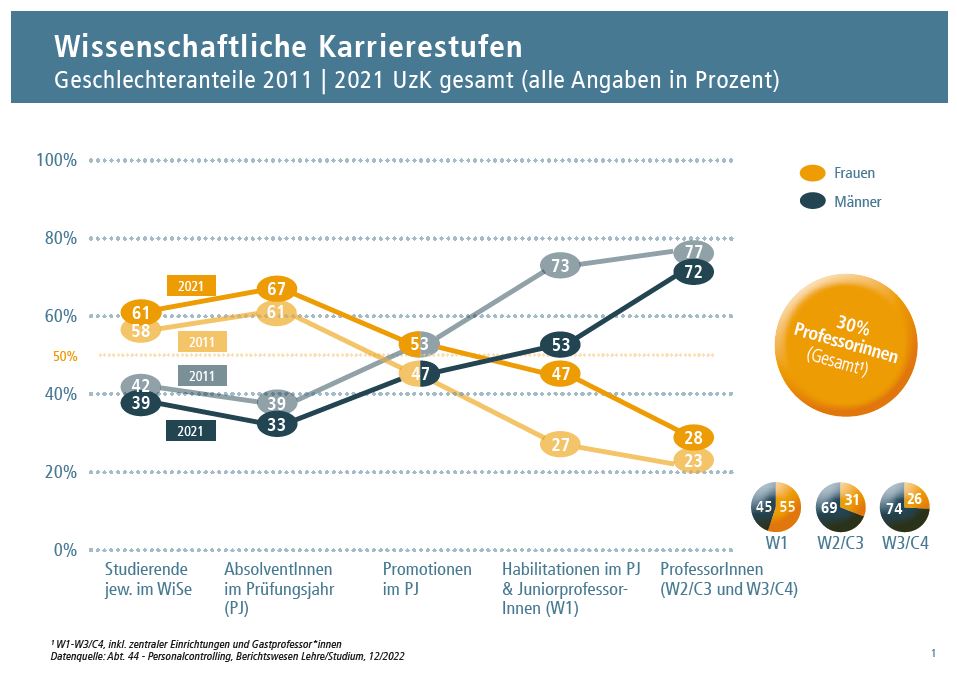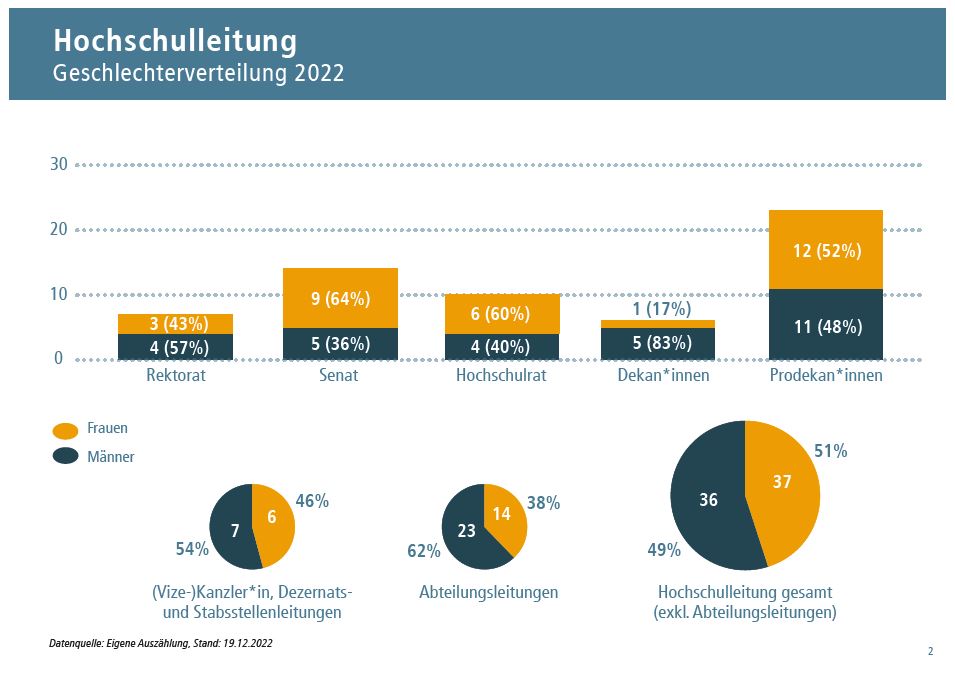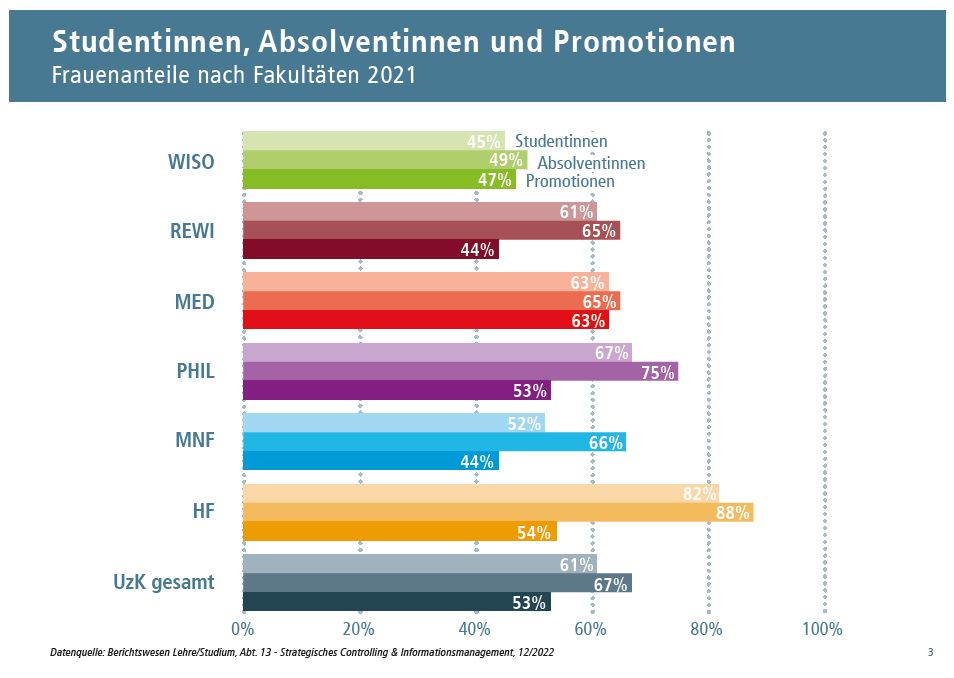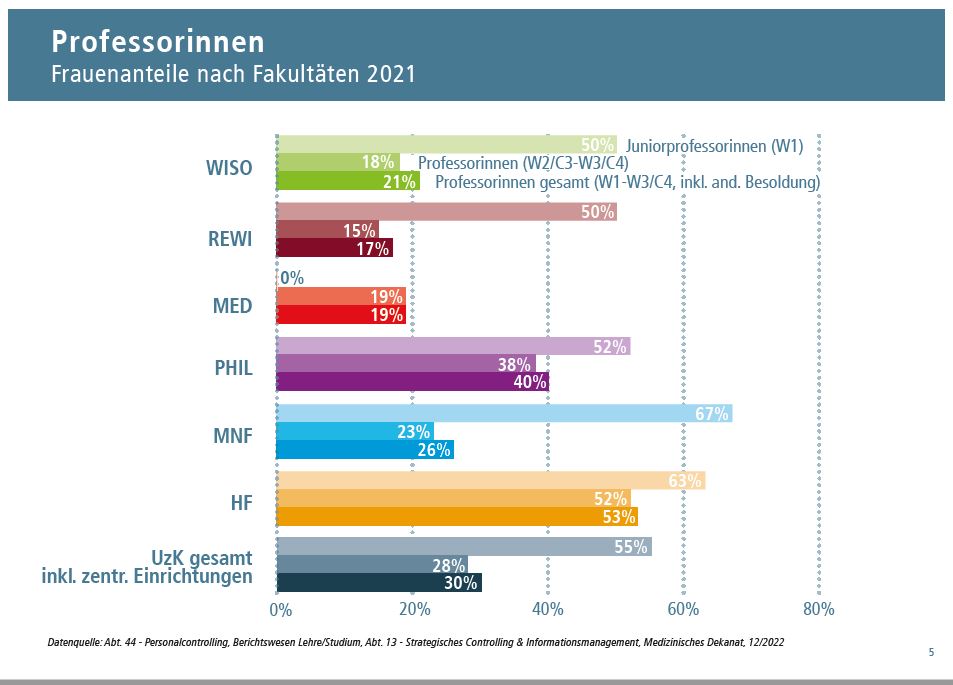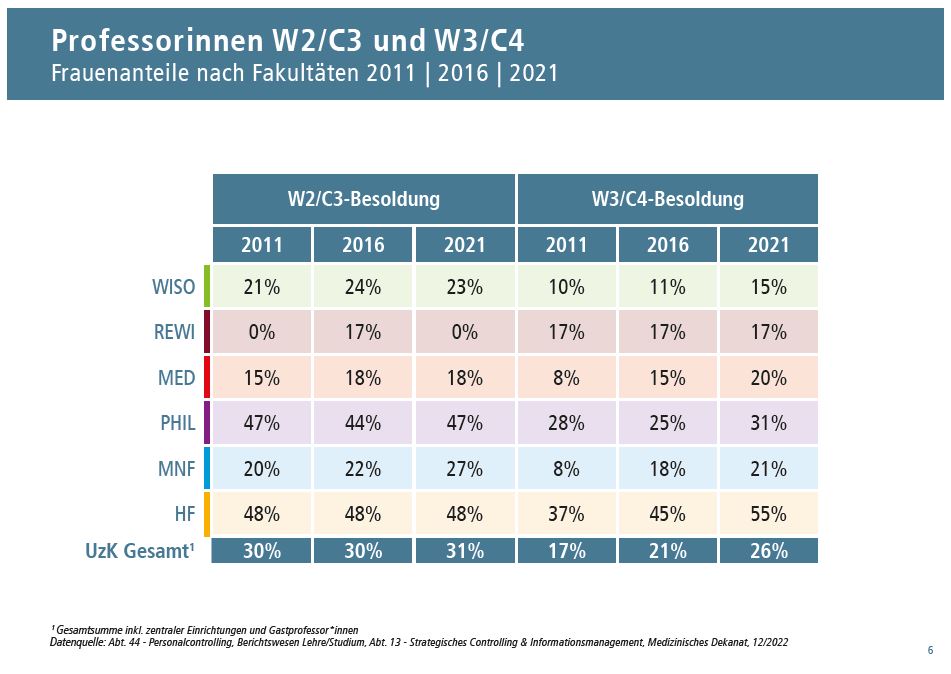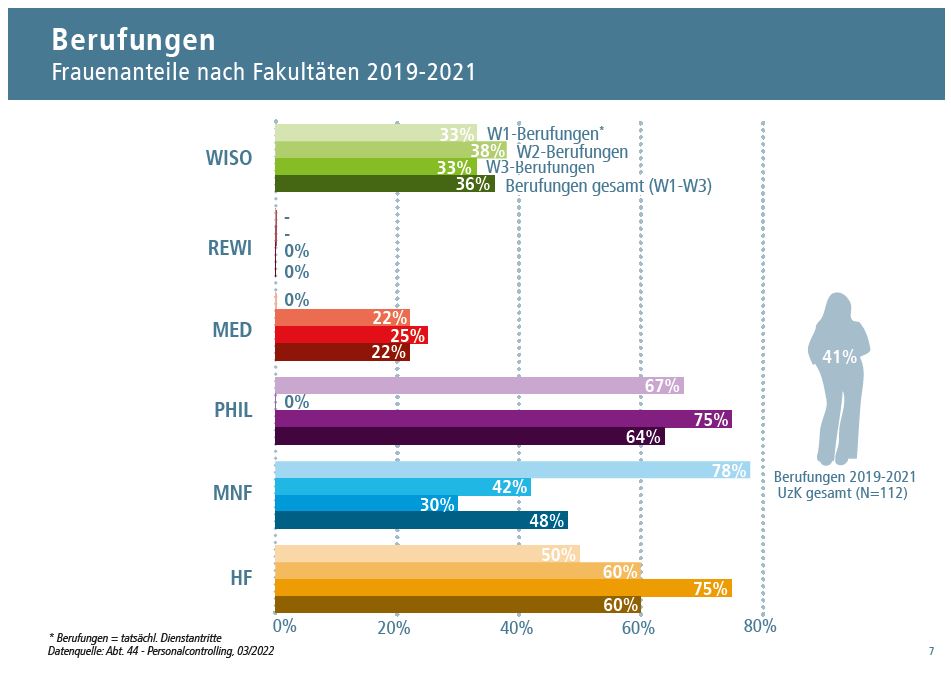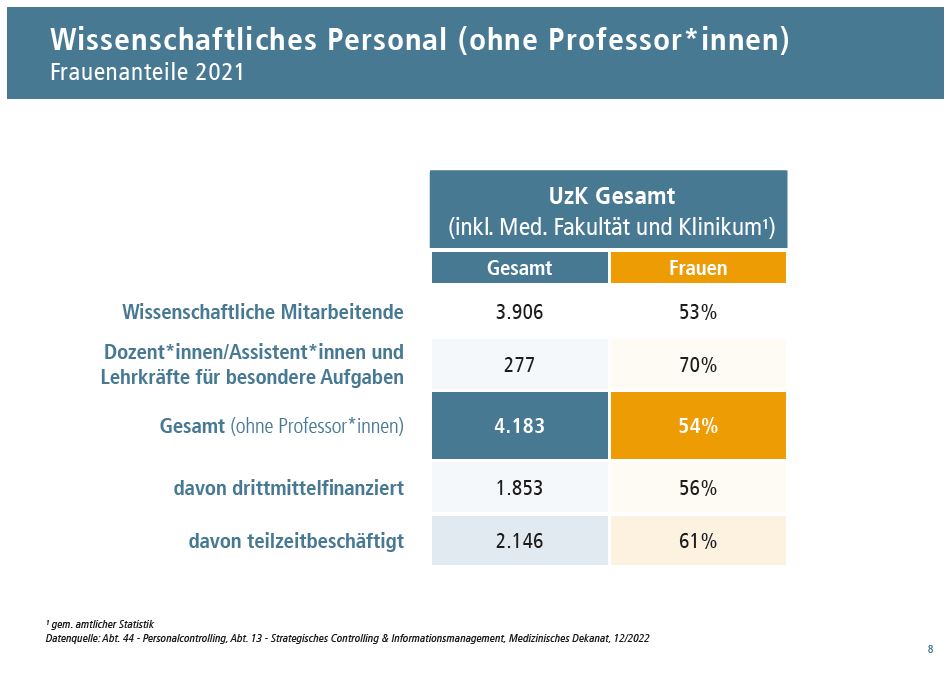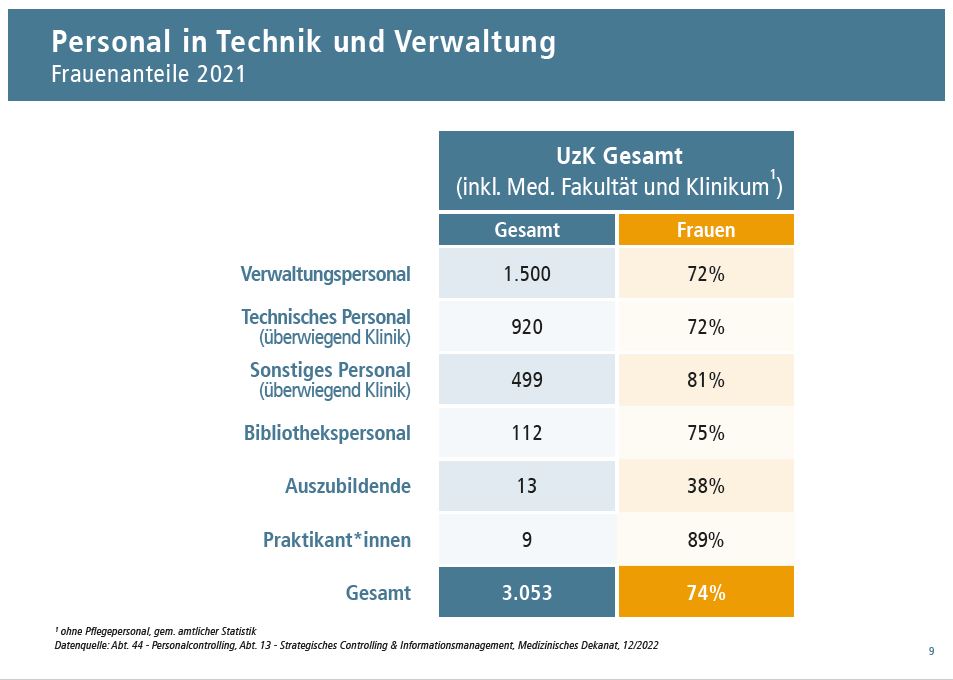Facts and Figures
The current Gender Data Report 2023 is also available here as a PDF (unfortunately not available in english yet).
Gender distribution at the University of Cologne 2023
(all data refers to the year 2021)
Women are represented at the University of Cologne (UzK) at almost all qualification levels or in all status groups at an above-average rate compared to the state and national average (cf. Gender Report 2022, Netzwerk Frauen- und Geschlechterforschung NRW). In the nationwide "Ranking of higher education institutions by gender aspects 2021" (cf. CEWS, 2021), the UzK is in the good midfield in a nationwide comparison with other universities with regard to the representation of women at the various qualification levels.
However, a closer look reveals clear differences both in terms of gender distribution at the individual qualification levels and with regard to the respective faculties and subjects.
Female students and doctorates
In 2021, 61% of students at the UzK were female (see chart: Studentinnen, Absolventinnen und Promotionen). However, this percentage varies greatly, depending on the faculty and department. The highest proportion of women was recorded by the Faculty of Humanities with 82%. At the Faculty of Economics and Social Sciences, the proportion was lowest at 45%. In the group of completed doctorates, these levels could not be maintained. The proportion of women at the Faculty of Human Sciences was only 54%. The lowest proportion of women was in the Faculty of Law and the Faculty of Mathematics and Natural Sciences, each with 44%. Overall, 328 women (53%) successfully completed their doctorates in 2021.
Postdocs
The group of postdocs is characterized by different factors. In the case of postdoctoral qualifications, the proportion of women was 40% in 2021. Significantly more than the year before (26%). Here, the female share has increased significantly in recent years (in 1990, it was only 8%). At the same time, strong fluctuations over the last few years are visible in this group. These can be explained on the one hand by the low number of habilitations (53 in 2021) and on the other hand by the decreasing importance of habilitations in favor of other career paths. In 2021, for example, the proportion of women in junior professorships was 54% overall and 40% in junior research group leaders financed by third-party funds (see chart: Postdoktorandinnen).
Female professors
The proportion of female professors at the UzK in 2021 was 30% overall (all grades). In the group of W2/C3, the proportion of women was 31%, and in the group of W3/C4 it was only 26%. The W2/C3 and W3/C4 grades combined had a 28% share of women (see chart: Professorinnen).
The differentiated representation of W2/C3 and W3/C4 salaries over the last ten years shows a slow but steady increase in the W3/C4 group from 17% to 26% in 2021. For W2/C3 salaries, however, there was stagnation at 30% in 2011 and 2016 and a slight increase of one percentage point to 31% in 2021.
The appointment rate of women was 41% across faculties in 2019-2021 (see chart: Berufungen).
Academic staff and technical, administrative, and university management staff.
The further academic staff (excluding female professors) shows an almost balanced gender ratio: 54% of the academic staff at the UzK are female. And also in the group of personnel in technology and administration, the 50% mark is clearly exceeded with a share of women of 74%. However, it is also visible here that the proportion of women is somewhat lower at the higher management levels in the administration ((vice) chancellor, heads of departments and central offices). In December 2022, it was 46% and at the level of department heads only 38% (see chart: Hochschulleitung).
In the self-governing bodies, women were represented by at least about one-third in 2022: at the rectorate level with 43%, in the senate even with 64% and in the university council with 60%. Among the vice deans of the faculties, the proportion of women was 52% overall, while among the deans it was significantly lower at 17%.
Conclusion
In summary, the UzK can boast a high proportion of women at almost all qualification levels, especially among students. This means that it has a large pool of talented potential young female scientists at its disposal. The continuous increase in the proportion of female professors is a particular success, although in 2020 the proportion fell back to 29% compared to the previous year (31%). And the figures still show that women are underrepresented, depending on the position, faculty and subject, and thus the equality goals have not been achieved. Particularly from the postdoc level and in leadership positions. Thus, it is still necessary to promote young female scientists and to attract female professors as well as female executives in the administration.


